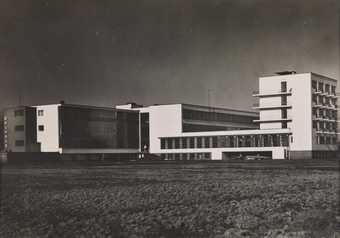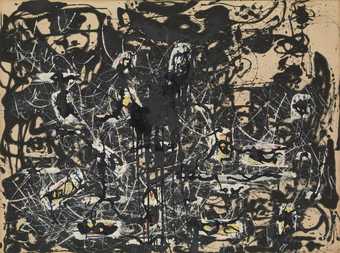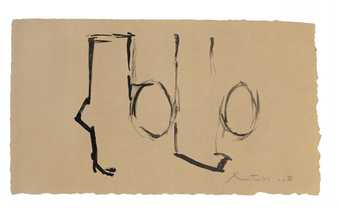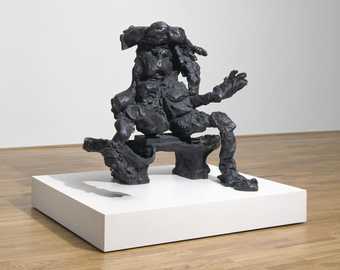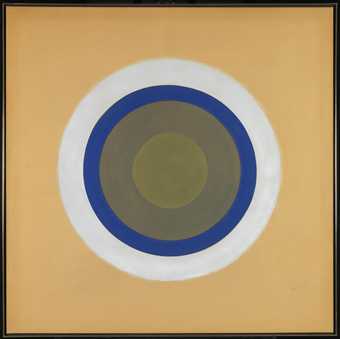
Kenneth Noland
Gift (1961–2)
Tate
© The estate of Kenneth Noland /VAGA, New York/DACS, London 2025
The college’s progressive principles were based on the educational theories of John Rice, its founder. In the curriculum, drama, music and fine art were given equal status to all other academic subjects. Teaching was informal and stress was laid on communal living and outdoor activities. Most of the work of running the college and maintaining the buildings was done by students and faculty. Black Mountain quickly became an extraordinary powerhouse of modern culture in America. Artists associated with the college include Robert Rauschenberg, Merce Cunningham, Willem de Kooning, Cy Twombly, John Cage and Anni Albers.
Its board of advisers included Albert Einstein, and among its teachers were some of the greatest luminaries of modern American culture. They included the founder of the Bauhaus, architect Walter Gropius, and Bauhaus teacher Josef Albers, who had fled Nazi Germany after the closure of the Bauhaus that same year and became one of the first teachers at the college.
In 1949 Albers and others left as a result of internal divisions. The College was reconstituted under the poet Charles Olson but eventually closed in 1953.

